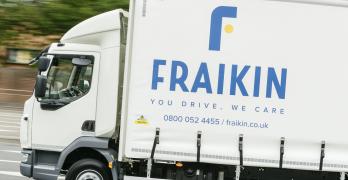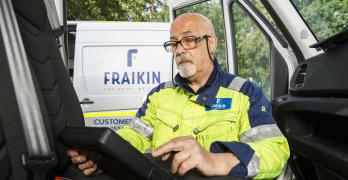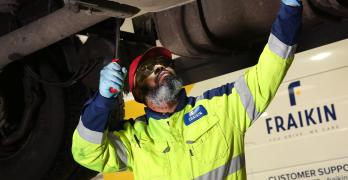Fleet optimization: the importance of looking forward in time… and also in terms of uses
- 05/04/22
- 4 min
Given the economic disruption caused by the global pandemic, companies should already be preparing their post-Covid strategy. Identifying possible savings, improving fleet productivity… There are lots of ideas, all of which require anticipation and a very methodical approach. FRAIKIN Group Director of Innovation Olivier Dutrech explains.

Since the COVID-19 health crisis has enforced an unprecedented slowdown on companies and their staff, the topic of fleet optimization is already on the agenda. Once things get up and running again, the majority of sectors will be seeking to control their costs and therefore anticipation is crucial. For Olivier Dutrech, Director of Innovation, “what we need to do first is to think about the reality of uses not only to improve the present but above all to look to the future!”
Measuring the TCO correctly
A company’s fleet reflects its business which should evolve according to the company’s overall goals. “But the major difficulty for fleet managers or company directors is to have the necessary distance to analyze the cost items making up the TCO (Total Cost of Ownership) of their fleet”, observes Olivier Dutrech. The first step is to launch a diagnosis phase. “Because we can only optimize what we can measure we need to have an overall vision of the fleet”.
The task begins by defining a rule for naming each type of vehicle. “Making the connexion between the vehicles in the fleet, the real use and their management, what is done with them, that is the second key aspect of this audit phase which consists in mapping the fleet”. FRAIKIN’s experts and consultants can assist companies in this approach to reconcile the data linked to real uses of the fleet while respecting the confidentiality of the data and with the aim of improving staff practices.
To ensure that this service is comprehensive we also benchmark the results based on our reference systems and databases while taking into account the specificities of our clients’ sectors of activity.
There is optimising… and optimising
Launching a strategy of fleet optimization is only viable if we set the goals we want to achieve. “When we talk about optimization we sometimes just think it is just about reducing costs. But it needs to be about improving the productivity of the fleet or reducing its impact on the environment as well” Dutrech points out. In all cases, data collection and analysis is pivotal “to primarily understand uses and then to measure the results achieved by the optimization project; because the idea is that it will be the first stage in a continued improvement approach” adds Olivier Dutrech.
If there is no telematic installation FRAIKIN experts can leverage data provided by solutions that can be plugged into a vehicle’s cigarette-lighter socket, a sensor which collects crucial data. In order for the optimisation to be effective, knowledge of the equipment and its uses must be considered in relation to the senior management objectives. “The fact that the choices are supported within the company is key to the success of the project, emphasizes Olivier Dutrech because the recommendations will always lead to practical and organizational consequences for the staff. Choices that will have to be put into practice in the field”.
From TCO to TVO…
But just analyzing the accounts of the fleet via TCO also has its limits. That’s why FRAIKIN’s experts also use another concept: TVO which stands for Total Value of Ownership. The idea here is to take into account all charges associated with the fleet, including those that do not instantly appear in the figures. “A good example is the case of a flat tyre, Olivier Dutrech explains. Tyre changes are the visible costs. But from a TVO perspective a flat tyre also equates the time the vehicle can’t be operated, the loss in operational results linked to the need to send out a replacement vehicle to meet delivery deadlines, the administrative time needed to order the new tyre, and then its replacement… i.e. often ten times the apparent cost”. Thinking in terms of TVO rather than TCO in a fleet optimisation project is often much more thorough and helps to identify many areas that could be improved!
Also worth reading

Labour’s Autumn Budget Uncertainty Highlights the Value of Contract Hire

Driver walkaround checks: Why they matter and how Fraikin is making them easier

